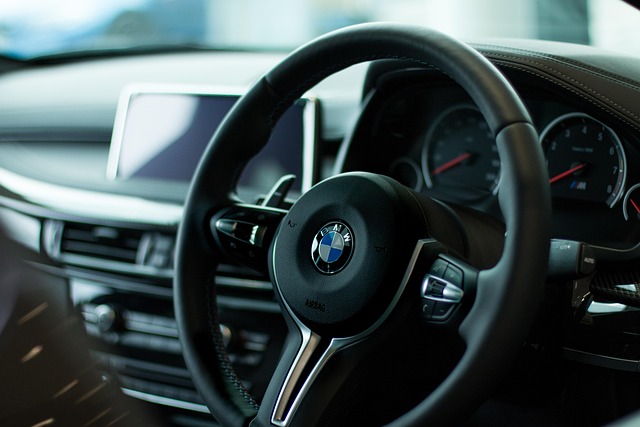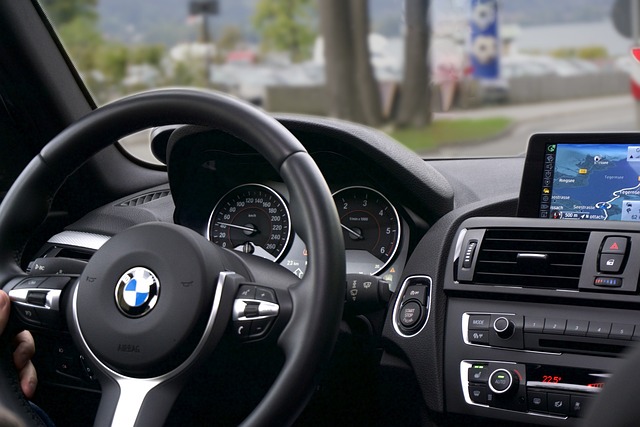Looking to register your car in California? This comprehensive guide walks you through every step, from understanding eligibility requirements to obtaining a license plate. We cover essential documents, gathering necessary paperwork, and even using online services efficiently. A key part of the process involves a vehicle inspection and verifying your car’s unique VIN with the DMV vin verifier. By following these straightforward steps, you’ll be cruising down California roads in no time.
- Understand Eligibility Requirements for Car Registration
- Gather Necessary Documents for Car Registration
- Visit Your Local DMV Office or Use Online Services
- Perform Vehicle Inspection and Verify VIN
- Complete Registration Process and Obtain License Plate
Understand Eligibility Requirements for Car Registration

Before you begin the registration process, it’s crucial to understand if your vehicle meets California’s eligibility criteria. To register a car in California, your vehicle must be legally imported and comply with state safety standards. The Department of Motor Vehicles (DMV) conducts thorough inspections, including a Vehicle Identification Number (VIN) verification using specialized tools like a VIN verifier, to ensure the vehicle’s authenticity and compliance.
For out-of-state or international vehicles, a valid registration from your previous state or country is required, along with proof of insurance and any applicable emissions certifications. If you’re bringing a classic car or a vehicle older than 25 years, specific additional documents may be needed during the VIN inspection process to prove its historical significance and roadworthiness.
Gather Necessary Documents for Car Registration

Before you start the registration process, it’s crucial to gather all the necessary documents for car registration in California. The Department of Motor Vehicles (DMV) requires a range of paperwork to ensure the accuracy and legitimacy of your vehicle’s information. One key document is the Vehicle Identification Number (VIN) verifier, which can be obtained through services like mobile vin inspection or a traditional vin inspection. These services verify the VIN’s authenticity, a critical component in establishing ownership and preventing fraud.
Additionally, expect to provide proof of insurance, valid driver’s licenses for all registered drivers, and potentially other documents like title records, especially if transferring ownership. Having these documents ready ensures a smoother registration process, whether you opt for a mobile vin verification or visit a DMV office for an in-person inspection.
Visit Your Local DMV Office or Use Online Services

Visiting your local DMV office or utilizing online services are both viable options to register a car in California. The Department of Motor Vehicles (DMV) provides a straightforward process, ensuring that all necessary steps for registration are completed efficiently. One crucial step is to verify the Vehicle Identification Number (VIN) using official channels. The DMV offers a VIN verifier tool, which can be accessed both online and at physical locations, ensuring vehicle authenticity.
For added convenience, mobile vin verification services are available, offering an alternative approach. These mobile vin inspection options allow you to complete the initial registration checks from the comfort of your home or on the go. By employing these modern solutions, you streamline the car registration process in California, making it more accessible and less time-consuming.
Perform Vehicle Inspection and Verify VIN

Before registering your car in California, it’s crucial to have a thorough understanding of your vehicle’s condition and its unique identifier, the Vehicle Identification Number (VIN). Start by scheduling or performing a mobile VIN inspection if you prefer convenience; many services now offer this option. A reliable DMV vin verifier can cross-check the VIN data against state records, ensuring it matches the vehicle’s actual make, model, year, and other critical details. This step is essential as it helps prevent fraud and ensures you’re providing accurate information during the registration process.
During your inspection, a professional will check for any discrepancies or signs of tampering. They’ll also verify that the vehicle hasn’t been reported stolen or has outstanding issues. With a valid and matching VIN, proceed with confidence to the next steps in registering your car in California, knowing you’ve laid a solid foundation for a smooth and legal registration process.
Complete Registration Process and Obtain License Plate

After gathering all necessary documents, it’s time to complete the registration process at a California Department of Motor Vehicles (DMV) office. Bring your vehicle along for inspection and have its VIN verified using a trusted mobile VIN verifier or the DMV’s own system. This step is crucial to ensure that your car matches the details on record. Once your vehicle passes the inspection, you’ll receive an registration certificate and license plates.
To streamline the process, consider utilizing a mobile VIN inspection service for convenience. These services allow you to verify your vehicle’s history and identify any potential issues before visiting the DMV. This proactive approach can save time and help ensure a smooth registration experience, especially if you’re transferring ownership or updating your car’s information.
Registering a car in California involves several straightforward steps, from understanding eligibility requirements to gathering essential documents. By visiting your local DMV office or utilizing online services, you can efficiently complete the process. A crucial step is performing a vehicle inspection and verifying the VIN using a trusted dmv vin verifier. Once these tasks are accomplished, you’ll be on your way to obtaining your new license plate, ensuring your vehicle’s legal status in the Golden State.
